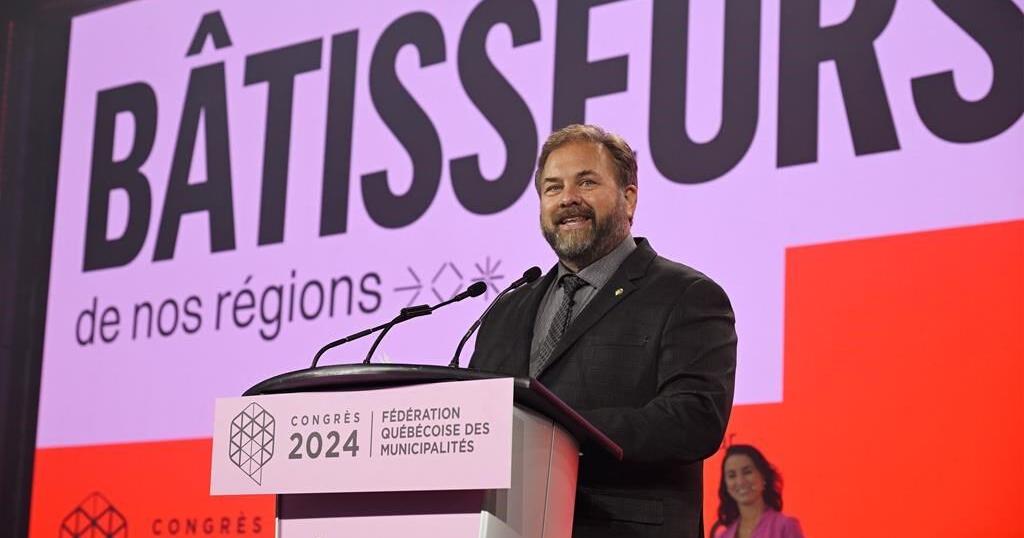MONTREAL – Some small Quebec municipalities are considering reducing the size of their city councils due to the challenges of recruiting candidates to run for office.
Quebec recently adopted a rule allowing communities of under 2,000 people to reduce their number of city councillors from six to four after next year’s elections.
The president of the Fédération québécoise des municipalités says the rule change has been a “recurrent” request from some towns that have struggled with persistent vacancies on city council or even for mayor.
Jacques Demers says it’s become harder for small towns to recruit candidates due to low salaries, the challenges of the job and a general lack of time and enthusiasm for community involvement.
“When we look at volunteers for leisure, volunteers for culture, volunteers for festivals, for exhibitions, all of this is becoming more and more difficult to recruit people,” he said in a phone interview.
Corina Lupu, mayor of the small community of Lac-des-Seize-Îles in the Laurentians, north of Montreal, says her council will debate the issue at the next meeting before making a decision.
“In small municipalities you don’t have a population of 20,000 to pick from,” she said in a phone interview. “Sometimes you have a population of 1,000 or 500.”
While it’s not an issue in her community, she believes it’s also getting harder to get people to run for office due to the hostile climate elected officials increasingly face.
“Some politicians are rather abused,” she said. “It’s not really a pleasant environment.”
Vacancies are a persistent problem at the municipal level in Quebec. Some 120 mayor and councillor positions went unfilled during the last municipal elections in 2021, while close to 5,000 candidates were elected unopposed.
Both Lupu and Demers say the very low salaries paid to small-town councillors is also a problem.
“In our small communities, municipal involvement is almost volunteer work since many people earn $1,000, $2,000, $3,000 per year for their involvement,” Demers said.
While Lupu says salaries in her community are higher than that, it doesn’t equal much per hour when considering the scope of the job, noting the province has increasingly offloaded responsibilities onto municipalities over time.
“We’re a small municipality, but we still have to fill in all the same paperwork as a large municipality,” she said. “It’s the same bureaucracy, but for less people.”
Chantal Richer, the general director for the 168-person town of Val St-Gilles in the Abitibi region, said her community will consider reducing the size of council.
“It would be easier to find candidates and we could divide the money saved between the four, which would increase their salaries a little more,” said Richer, adding the matter will be discussed at the next council meeting.
The mayors of Barkmere and Lac-Tremblant-Nord, both in the Laurentians, said they felt maintaining a six-person council was better for democracy, despite their small population bases.
“By reducing to four councillors, we could end up with a quorum of three people at council meetings,” Barkmere Mayor Luc Trépanier said in an email. “We do not believe that only three people should decide for an entire municipality.”
Lupu says moving from six to four councillors would allow towns like hers to save some money on salaries, which can be a consideration in places with very small tax bases.
However, she also worries that four-person councils in general could allow strong personalities to dominate and make decisions harder. Despite having fewer than 200 year-round residents, her lakeside community has never had a council vacancy as far as she can remember, and she struggles to imagine council without any of its current members on it.
“I think I’ve gotten a lot of value out of having six councillors, six opinions, six perspectives,” she said.
Municipalities that want to reduce the size of council after the 2025 elections have until the end of December of this year to pass a resolution to that effect. Demers says about 700 municipalities are eligible to make the change, but believes that most will stick with the current six-member-plus mayor format.
This report by The Canadian Press was first published Sept. 29. 2024.
